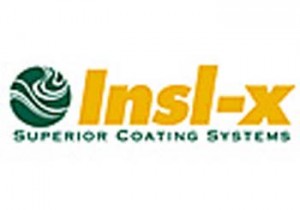Metal surfaces require regular coats of paints to keep them in good condition. The most common equipment you will see in homes include garden furniture, lawn movers, fencing posts, letter boxes, gates, metal wagons, machinery, crafts and an umpteen number of items. There is virtually no outdoor or indoor equipment that do not have steel or iron in them, and all of these items are prone to rusting and corrosion. The usual way to paint them is to first prepare the surface, apply a coat of primer and finally apply 1 or 2 coats of conventional enamel paint over the primer finished surface.
Advantages of Advanced Paints over Conventional Paints
Conventional enamel paints take longer than usual to dry and cure. The whole process can be very debilitating and time consuming. The more advanced enamel paints have distinct advantages over conventional paints – it requires lesser effort to prepare the surface, come in a variety of finishes and colors, and can even be applied on rusted surfaces if they are not too lose. Lose rusted surfaces are much easier to remove and can be done in a fraction of the time it takes otherwise. That means substantially saving in money and time.
Curing Time is a Critical Factor in Deciding the Paint
Curing time is a critical factor in paint durability – the faster they dry, the longer they last, and that is what you get in advanced paints like Hammerite Rust Cap which dries fast. Since they don’t require preparation for applying paint, they also help to save money. Hammerite Rust Cap has a special formula which is capable of encapsulating the rust itself and is suitable for both outdoor and indoor applications. Besides, they come in a vast range of colors to meet most décor requirements.
What makes Hammerite Rust Cap a preferred paint for rust prevention is the Glassguard Protection. Unique to Glassguard is the way millions of heat-hardened glass particles that interlock with each other in a resin base to provide a super-tough surface that can resist the harshest of weather conditions. It helps to block out moisture and thereby keep the metal safe from rusting. Another advantage is the durability of the paint itself.
Paint Colors can make a lot of Difference to Buying Decision
Paints and stains have other functions besides protecting the metal parts. They are expected to be aesthetically appealing and provide a smooth feeling on the surface. The more colors and finish to the range the better it is for use. Hammerite can be bought in hammered or smooth finish. In all there are 11 colors in both varities. Selecting the right color is an art in itself and hence the need for more options. For example the color you use for letter boxes may not be suitable for fences or the furniture or the lawn movers.
Yet another factor you need to consider when ordering paints is the paint’s hardness once it has been applied. A well hardened paint will ensure that scratches don’t show on the surface.


